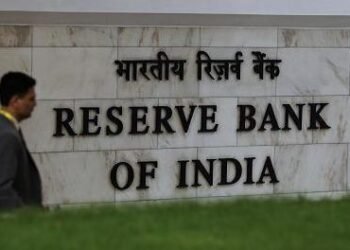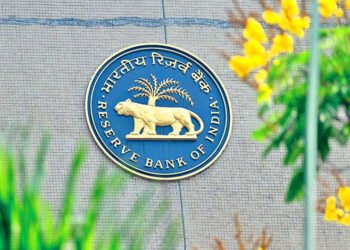As digital assets surge, India walks a tightrope between innovation and regulation
MUMBAI (Economy India): India’s CryptoCurrency sector stands at a critical juncture in July 2025. While owning and trading cryptocurrencies such as Bitcoin and Ethereum is legal in the country, they are not recognized as legal tender—meaning they cannot be used for regular payments like the Indian Rupee. With over 107 million estimated crypto users and a market valuation of $6.4 billion, the absence of a comprehensive legal framework is increasingly being felt across the financial ecosystem.
In this deep-dive, Economy India explores the current legal status, tax policy, regulatory oversight, and the anticipated future direction of cryptocurrency governance in India.

Legal Status: A Middle Ground
As of July 2025, cryptocurrencies in India are categorized as Virtual Digital Assets (VDAs) under the Income Tax Act. This allows individuals and entities to buy, sell, and hold them legally. However, these digital assets are not legal tender, which means they cannot be used for day-to-day payments or official monetary transactions.
This middle-ground policy underscores the government’s cautious yet open approach—recognizing crypto as an investable asset while refraining from mainstream monetary integration.
Historical Context: From RBI Ban to Supreme Court Relief
India’s crypto journey began with suspicion. In 2013, the Reserve Bank of India (RBI) issued its first warning on virtual currencies. The matter escalated in 2018 when the RBI imposed a de facto ban by prohibiting banks from supporting crypto-related businesses.
The Supreme Court struck this down in March 2020, calling the move unconstitutional. This judicial intervention revived the domestic crypto market and set the stage for further developments—mostly focused on taxation and compliance rather than clear regulatory classification.
Regulatory Oversight: Multiple Agencies, No Single Law
India currently relies on a fragmented regulatory model. Here’s how various institutions are involved:
- RBI remains cautious, focusing instead on promoting its own Central Bank Digital Currency (CBDC)—the Digital Rupee.
- SEBI monitors crypto-linked financial products but has limited jurisdiction due to the absence of securities classification.
- Ministry of Finance is leading policy discussions and is working on a long-pending regulatory paper, now expected by late 2025.
- FIU-IND has taken center stage since March 2023, enforcing Anti-Money Laundering (AML) and Know Your Customer (KYC) obligations on crypto exchanges under the PMLA.
However, the lack of inter-agency coordination and unified law continues to hinder market clarity and investor protection.
Taxation Regime: Stringent and Unyielding
India’s taxation policy is among the strictest globally:
- 30% flat tax on profits from cryptocurrency trading, regardless of the holding period.
- 1% TDS on transactions above Rs50,000 (Rs10,000 for some investors), in effect since July 2022.
- No deductions for losses or transaction expenses, except acquisition cost.
Introduced in Budget 2022-23, this taxation model reflects the government’s aim to curb speculative trading while boosting tax revenues.
Compliance and Reporting: Getting Stricter
Recent changes in the Union Budget 2025 have further tightened compliance:
- Exchanges must submit Suspicious Transaction Reports (STRs) to FIU-IND.
- Maintain records for a minimum of five years.
- Annual crypto transaction reporting is mandatory from FY 2025-26.
In 2024, FIU-IND issued notices to 15 exchanges for AML non-compliance, signaling increased enforcement.

Growing Adoption Amid Policy Gaps
Despite policy ambiguity, cryptocurrency adoption in India has surged:
| Metric | Value (2025) |
|---|---|
| Estimated Crypto Users | Over 107 million |
| Total Market Size | $6.4 billion |
| Most Popular Cryptos | Bitcoin, Ethereum |
| Major Indian Exchanges | CoinDCX, WazirX, ZebPay |
Challenges persist, however. Hacks like the 2025 CoinDCX breach (with a $44 million loss) highlight urgent security and investor protection gaps. High taxes have also prompted some users to shift to offshore platforms.
Global Influence and the Regulatory Discussion Paper
India’s crypto stance is being shaped by international movements:
- U.S. recently approved spot Bitcoin ETFs.
- Vietnam recognized crypto as property and established regulations.
- Bhutan has incorporated Bitcoin into its national reserves.
Acknowledging these shifts, the Indian government is revisiting its long-delayed discussion paper—initially expected in 2024. The new draft, set for release by late 2025, is incorporating feedback from global best practices and domestic stakeholders.
Proposed Models and Future Possibilities
Several proposals are being considered unofficially, including the COINS Act 2025 (by Hashed Emergent and Blackdot Policy), which recommends:
- Abolishing the 30% tax
- Allowing self-custody wallets without mandatory KYC
- Inclusion of Bitcoin in national reserves
While not government policy yet, such models reflect the growing demand for a more balanced, innovation-friendly approach.

Comparative Snapshot: India vs. Other Nations
| Country | Legal Status | Regulation | Taxation |
|---|---|---|---|
| India | Legal to own/trade; not legal tender | Developing | 30% + 1% TDS |
| USA | Legal, regulated assets | SEC, CFTC oversight | State-specific |
| Vietnam | Legal, recognized property | Clear AML rules | 10% capital gains |
| Bhutan | Legal, Bitcoin reserves | Eco-focused mining | Minimal |
The Road Ahead: Legal Clarity Still Distant
While India is unlikely to declare crypto as legal tender soon, legal recognition as a distinct asset class is a realistic future outcome. The RBI’s Digital Rupee could coexist with private cryptocurrencies, offering a government-backed alternative. Legislative clarity is expected, but timelines remain uncertain.
India’s cryptocurrency landscape in 2025 remains a work in progress. Legal for trading but not yet for spending, heavily taxed but lightly regulated, the crypto sector operates in a space shaped by contradictions and complexity. The ongoing policy review, global pressure, and surging domestic adoption may finally push the government toward a more stable and innovation-driven framework in the near future.
(Economy India)















